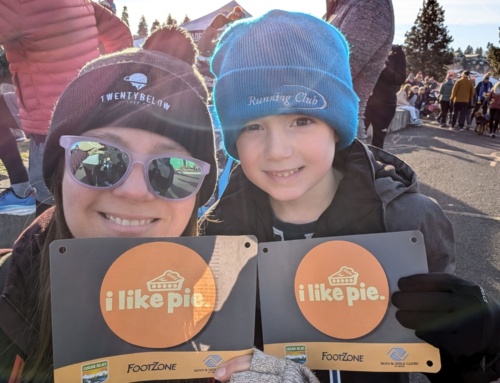This is an excerpt from the new book Running Past 50 by Caolan MacMahon, who is a guest on today’s podcast.
When thinking about goals, you want to consider what your primary goal is. You can set multiple goals along the way, and those can be used as fitness benchmarks or stand-alone goals. As an example: Many runners target a goal of running a marathon in the spring and the fall. But what do they do when they aren’t specifically training for one of those marathons? You can set mini goals between training cycles. These mini goals can serve two very important functions: (1) they keep you motivated, and (2) they focus on areas that need improvement. And they can be just as exciting and fulfilling as those bigger goals that so many runners fixate on.
If you’re a novice runner looking to run your first 5K, 10K, half- marathon, or beyond, you can set smaller goals that work you up to this long-term goal. This is not just about fitness; it’s also about learning how to deal with race situations, logistics, and problems that inevitably pop up during races—and just getting comfortable being in a situation where you have goals and might feel pressure.
Also note that when setting goals, it’s important to look at your experience, where you are now, and where you want to be in the future. Of course, your plans can change, but starting where you are and aiming for something reasonable now will lead you to the next step, whatever that may be. As you travel down new roads, previously unknown paths may reveal themselves. Let’s say you start off with a couch-to-5K program. At the time, your one goal is to run a 5K. You start running regularly, feel yourself getting stronger, run the 5K, and actually enjoy it. You find yourself thinking about a 10K, which just three months ago would have seemed unfathomable, but now it seems possible. Perhaps you think, “Maybe I can run a 5K faster.” Or you even think, “Maybe I can do a half-marathon next year.” All these new paths have been revealed because you traveled down the couch-to-5K road.
Annual plans need not be etched in stone. They can be edited along the way based on how things are going and if your desires change, but they must be dictated by where you are right now. If you run your first 5K and then think about running a marathon in two months, the result is likely to disappoint.
One thing to keep in mind about goals is that farther does not necessarily mean better. You may believe you aren’t a real runner unless you’ve run a marathon. Goals in running can be whatever you want. If you run, you are a runner, whether it’s 100 meters or 100 miles. The crucial part when thinking about an annual plan is that you aim for goals you deeply care about and that are based on where you are in your running journey right now.
MacMahon, Caolan. 2025. Running Past 50: Your Guide to Running Longevity and Success, Champaign, IL: Human Kinetics.








Leave A Comment
You must be logged in to post a comment.